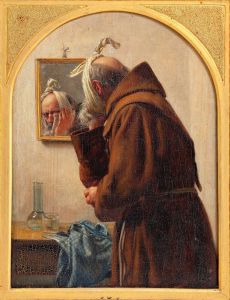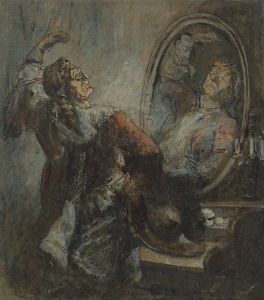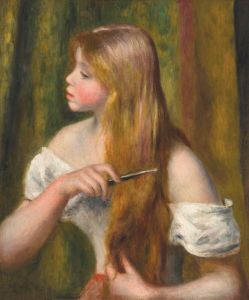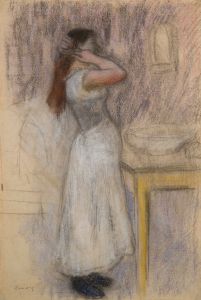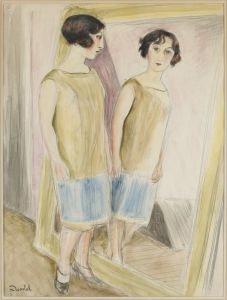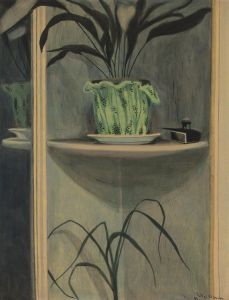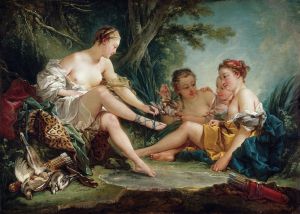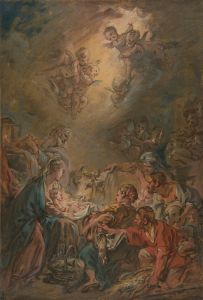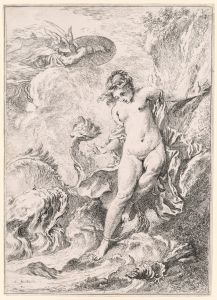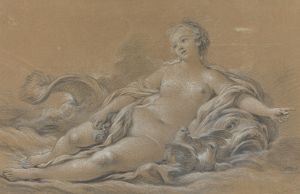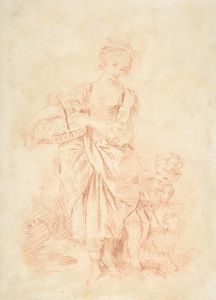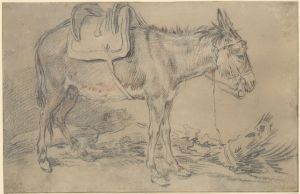
Une dame à sa toilette, also called La Mouche
A hand-painted replica of François Boucher’s masterpiece Une dame à sa toilette, also called La Mouche, meticulously crafted by professional artists to capture the true essence of the original. Each piece is created with museum-quality canvas and rare mineral pigments, carefully painted by experienced artists with delicate brushstrokes and rich, layered colors to perfectly recreate the texture of the original artwork. Unlike machine-printed reproductions, this hand-painted version brings the painting to life, infused with the artist’s emotions and skill in every stroke. Whether for personal collection or home decoration, it instantly elevates the artistic atmosphere of any space.
"Une dame à sa toilette," also known as "La Mouche," is a painting by the renowned French Rococo artist François Boucher. Created in 1742, this artwork exemplifies Boucher's mastery in capturing the elegance and sensuality characteristic of the Rococo period. Boucher was a prominent figure in 18th-century French art, celebrated for his idyllic and voluptuous paintings that often depicted classical themes, pastoral scenes, and intimate domestic settings.
The painting "Une dame à sa toilette" portrays a young woman engaged in her toilette, a common theme in Rococo art that reflects the period's fascination with beauty, luxury, and the private lives of the aristocracy. The term "toilette" refers to the process of dressing and grooming, a ritual that was both a personal and social activity during the 18th century. In this painting, Boucher captures the intimate moment with a sense of grace and delicacy.
The composition of the painting is carefully arranged to draw the viewer's attention to the central figure of the lady. She is depicted seated at her dressing table, surrounded by various objects associated with the toilette, such as a mirror, brushes, and cosmetics. The attention to detail in these objects highlights Boucher's skill in rendering textures and materials, contributing to the overall opulence of the scene.
Boucher's use of color and light in "Une dame à sa toilette" is characteristic of his style. The soft, pastel hues and the gentle play of light across the canvas create a sense of warmth and intimacy. The artist's technique in rendering the delicate fabrics of the lady's gown and the intricate details of her surroundings further enhance the painting's luxurious quality.
The alternative title "La Mouche" refers to the small beauty patches, or "mouches," that were fashionable among women of the time. These patches were often made of velvet or silk and were applied to the face to accentuate the complexion and convey various meanings, such as flirtation or sophistication. In the painting, the presence of these beauty patches adds an element of period-specific detail and highlights the cultural practices of the era.
François Boucher's work, including "Une dame à sa toilette," played a significant role in defining the Rococo style, which was characterized by its ornate detail, lightness, and emphasis on themes of love and leisure. Boucher's paintings were highly sought after by the French aristocracy, and he enjoyed the patronage of influential figures, including Madame de Pompadour, the official chief mistress of King Louis XV.
Today, "Une dame à sa toilette" is appreciated not only for its aesthetic qualities but also for its insight into the social and cultural practices of 18th-century France. The painting is part of the collection at the Louvre Museum in Paris, where it continues to be admired by art enthusiasts and scholars alike. Boucher's ability to capture the essence of his time through his art ensures his enduring legacy in the history of European painting.





